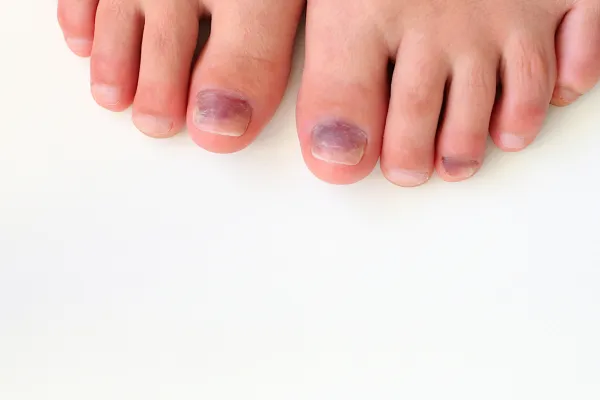
When Should I Worry About a Bruised Toenail?
We've All Been There...
You take your shoes off after a long run, hillwalk, or maybe a misstep with the coffee table—and there it is. A bruised, blackened toenail staring right back at you.
Most of the time, it’s nothing to panic about. But there are times when that bruised toenail might be a sign of something more serious. So, how do you know when to just rest—and when it’s time to see a podiatrist?
Let’s break it down 👇
What Causes a Bruised Toenail?
A bruised toenail (also called a subungual haematoma) usually happens when there’s trauma to the nail bed. This could be:
Repeated pressure during running or hiking (especially downhill)
Wearing shoes that are too tight or too loose
Dropping something on your toe
Stubbing your toe badly
The pressure causes blood to collect under the nail, leading to that dark purple or black discolouration.
When to Worry: Signs You Shouldn’t Ignore
Here’s when it’s best to book a visit with a podiatrist in Bishopbriggs (like our team at The Springfield Clinic):
1. The pain is severe or getting worse
If you’re struggling to walk, or the toe is throbbing constantly, you could have a more serious injury—like a fracture under the nail.
2. The nail is lifting off or looks loose
This can make you prone to infection. It might also lead to nail loss, which is best managed with professional support.
3. You see signs of infection
Redness, warmth, swelling, pus, or bad smell around the nail? It’s time to get it checked.
4. The bruise isn’t going away
Most bruised toenails will slowly grow out over a few months. If yours isn’t improving—or looks worse over time—it’s worth a closer look.
5. You’re diabetic or have poor circulation
Even small injuries to the feet can turn serious if you have underlying health conditions. Best to be safe.
A Note for Runners & Hillwalkers
If you love being active but keep getting bruised toenails, there might be a biomechanical issue at play—like how your foot strikes the ground or the way your shoes fit during activity.
At The Springfield Clinic, our gait analysis in Bishopbriggs and sports podiatry services in Glasgow can help spot problems like:
Overpronation or supination
Pressure points in your shoe
Repeated trauma during downhill movements
Custom orthotics from our Glasgow podiatry team can often prevent bruised toenails from becoming a regular issue.
Home Care Tips (If It’s Mild)
If your toenail bruise is small and not causing much pain:
Keep it clean and dry
Wear open-toe or loose-fitting shoes
Avoid high-impact activity for a few days
Don’t try to pop or drain it at home—this can lead to infection
When in Doubt, Let Us Take a Look
We know it’s just a toe—but that little bruise can sometimes cause a lot of problems. The good news? Most bruised toenails are easy to manage when caught early.
At The Springfield Clinic, we offer expert foot care in a friendly, relaxed setting. Whether you need help with pain, swelling, or simply want peace of mind, our podiatrists in Bishopbriggs are here to help.
Book Your Appointment
Think your bruised toenail might be more than just a bump?
You don’t have to guess.
📍 Visit our private podiatry clinic in Bishopbriggs
🔍 Ask about gait analysis and injury prevention
👟 Let us help you get back to walking, running, or hiking—pain-free



